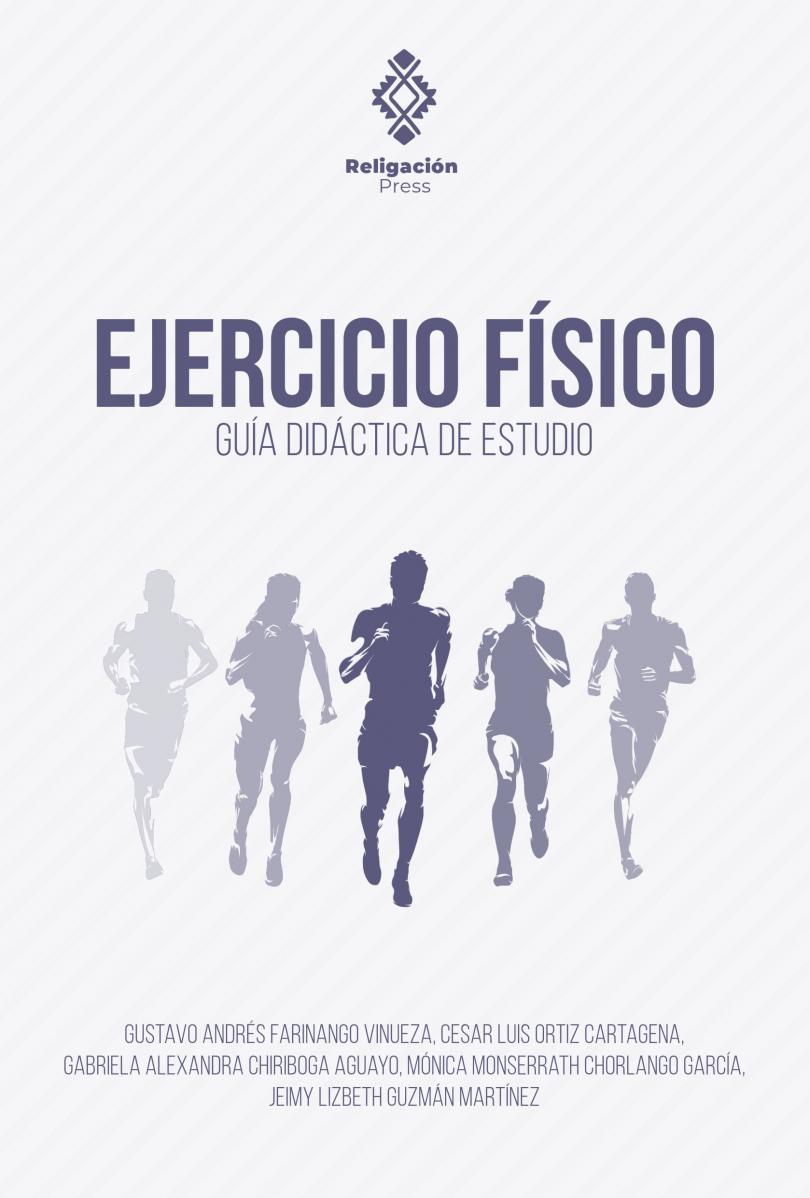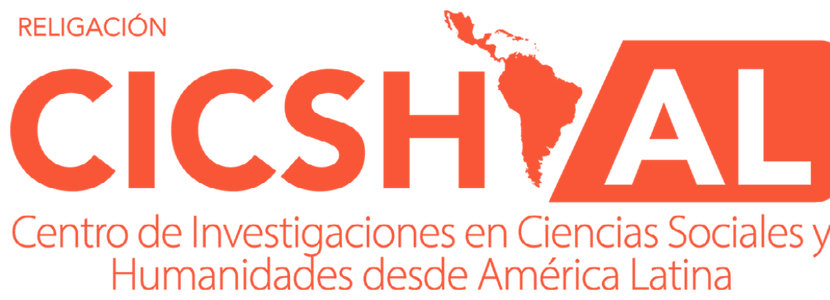Ejercicio físico. Guía didáctica de estudio
Palabras clave:
Rehabilitación médica; Actividad de tiempo libre; Salud; Deporte; Paciente.Sinopsis
La asignatura de Ejercicio Físico juega un rol primordial en la formación inicial de los estudiantes de la Carrera de Tecnólogo en Rehabilitación Física. Este libro constituye un componente fundamental en la capacitación de futuros profesionales en el campo de la salud y la fisioterapia. Durante el desarrollo de esta materia, los alumnos se sumergen en un amplio espectro de conocimientos teóricos y prácticos que establecen los cimientos esenciales para comprender y aplicar eficazmente el ejercicio físico en el ámbito de la rehabilitación. Al centrarse en los fundamentos teóricos y el desarrollo de habilidades prácticas, esta asignatura resulta crucial para la preparación de los estudiantes en su trayectoria hacia una profesión centrada en mejorar la calidad de vida y el bienestar a través de la actividad física terapéutica. El presente documento detalla los principales contenidos del curso, garantizando una sólida base para los futuros profesionales en el campo de la rehabilitación física.
Descargas
Citas
Acevedo, E.O. (2019). Exercise for Health and Performance: The FITT Principle and Resistance Training Exercise Prescription. ACSM’s Health & Fitness Journal, 20-24.
Adalcorcon. (2015, 11 de noviembre). FÚTBOL BASE | El importante trabajo de fisioterapia. https://acortar.link/aRhFJd
AlanCaña. (2021). Ajax vs Roma da inicio a la ronda de 4tos de final de la Europa League. https://acortar.link/75KNQ8
American College of Sports. (2018). ACSM’s Guidelines for Exercise Testing and Prescription (10th ed.). Wolters Kluwer.
American Physical Therapy Association. (2020). Role of the physical therapist in sports. https://www.apta.org/your-practice/special-interest-groups/sports-practice
Anderson, J. (2020). Developing Cross-Cultural Competence in the Workplace. International Journal of Management, 45(2), 78-79.
Anderson, L., Oldridge, N., Thompson, D.R., Zwisler, A.D., Rees, K., Martin, N., & Taylor, R.S. (2016). Exercise-based cardiac rehabilitation for coronary heart disease. Cochrane Database of Systematic Reviews.
Apostolopoulos, N., Metsios, G.S., Flouris, A.D., Koutedakis, Y., & Wyon, M.A. (2019). The relevance of stretch intensity and position—a systematic review. Frontiers in Psychology.
Ardern, C.L., Glasgow, P., Schneiders, A., Witvrouw, E., Clarsen, B., Cools, A., Gojanovic, B., Griffin, S., Khan, K., Moksnes, H., Mutch, S., Phillips, N., Reurink, G., Sadler, R., Grävare Silbernagel, K., Thorborg, K., Wangensteen, A., Wilk, K., Bizzini, M. (2016). 2016 Consensus statement on return to sport from the First World Congress in Sports Physical Therapy, Bern. British Journal of Sports Medicine, 50(14), 853-864. https://doi.org/10.1136/bjsports-2016-096278
Atkinson, G., y Nevill, A.M. (1998). Statistical methods for assessing measurement error (reliability) in variables relevant to sports medicine. Sports Medicine, 217- 238.
Avila, C. (2017). Los mejores ejercicios para aumentar la flexibilidad. Mejor con Salud. https://mejorconsalud.as.com/los-mejores-ejercicios-para-aumentar-la-flexibilidad/
Baechle, T., y Earle, R. (2018). Essentials of Strength Training and Conditioning. Human Kinetics.
Besson, D. (2018). Cardiovascular rehabilitation in cardiac and vascular diseases: The benefits of exercise training. Annales de Réadaptation et de Médecine Physiqu, 399-407.
Bollinger, L.M., Paquette, M.R., Dalleck, L.C., & Benso, D.J. (2019). A pilot study examining the effects of blood flow restriction therapy on muscular strength, endurance, and post-exercise hypotension in women. Frontiers in Physiology.
Bompa, T., y Buzzichelli, C.A. (2018). Periodization: Theory and Methodology of Training. Human Kinetics.
Bosch, M. (2021). Ejercicio físico y salud. MCU.
Bouchard, C., Blair, S.N., & Katzmarzyk, P.T. (2015). Less Sitting, More Physical Activity, or Higher Fitness? Mayo Clinic proceedings, 90(11), 1533–1540. https://doi.org/10.1016/j.mayocp.2015.08.005
Clark, R. (2021). Skill Refinement and Professional Growth. Journal of Professional Development, 45-58.
EBook–Instituto ISAF. (s.f.). Pruebas y Tests de la Resistencia Aeróbica. https://blog.institutoisaf.es/wp-content/uploads/2022/09/Test-de-resistencia-aerobica-EBOOK-ok.pdf
DiStefano, L.J., Padua, D.A., Blackburn, J.T., Garrett Jr, W.E., & Guskiewicz, K.M. (2019). Integrated Injury Prevention Program Improves Balance and Vertical Jump Height in Children. Journal of Strength and Conditioning Research, 2447-2457.
El Comercio. (2016). Seis claves para aumentar tu resistencia al hacer ejercicio. https://elcomercio.pe/viu/estar-bien/seis-claves-aumentar-resistencia-ejercicio-262421-noticia/
El Observador. (2017). ¿Es importante entrenar la fuerza muscular? https://www.elobservador.com.uy/nota/-es-importante-entrenar-la-fuerza-muscular—20171114500
Fisiostar. (2013). https://fisiostar.com/wp-content/uploads/2013/08/fisioprofilaxis.jpg
Fogliani, M. (2016). Pass the Energy Please Part 5 – The Oxidative System. Long duration, Low power. Dragon Analytics. https://dragonanalytics.com.au/pass-the-energy-please-part-5-the-oxidative-system-long-duration-low-power/
Fong, S. S.M., Ng, S.S.M., Chung, J.W.Y., Chung, L.M.Y., Chow, L.P.Y., & Ma, A.W.W. (2017). The efficacy of proprioceptive training for improving motor function in patients with knee osteoarthritis: a systematic review and meta-analysis. Osteoa.
Foster, N.E., Anema, J.R., Cherkin, D., Chou, R., Cohen, S.P., Gross, D.P., & Woolf, A. (2018). Prevention and treatment of low back pain: evidence, challenges, and promising directions. The Lancet.
Martínez López, E.J. (2018). La Flexibilidad. Pruebas aplicables en educación secundaria. Grado de utilización del profesorado. EFdeportes, 58. https://efdeportes.com/efd58/flex.htm
Haff, G.G., y Triplett, N.T. (2015). Essentials of Strength Training and Conditioning. Human Kinetics.
Harmison, R.J. (2019). Peak performance in sport: Identifying ideal performance states and developing athletes’ psychological skills. Professional Psychology: Research and Practice, 275-282.
Harrison, C., Dawson, B., Goodman, C., & Easthope, C. (2020). Nutrition for Sport, Exercise, and Performance. Oxford University Press.
Harriss, D.J., & Macsween, A. (2019). Physiological testing of elite athletes. British Journal of Sports Medicine, 543- 545.
Hart, J.M. (2019). Physical Therapist as First Responder: Knowledge, Confidence, and Educational Needs for Athletic Injuries. Sports Health: A Multidisciplinary Approach, 340-44.
Harvey, L.A., Katalinic, O.M., & Herbert, R.D. (2018). Stretch for the treatment and prevention of contractures. The Cochrane Database of Systematic Reviews.
Haskell, W.L. (2007). Physical activity and public health: Updated recommendation for adults from the American College of Sports. Medicine and the American Heart Asso.
Hawley, J.A. (2017). Peak power output predicts maximal oxygen uptake and performance time in trained cyclists. European Journal of Applied Physiology, 1723-1731.
He, C.S. (2019). The physiological recovery and performance enhancement of an elite athlete after an acute session of normobaric cold air exposure. Frontiers in Physiology, 855.
Hewett, T.E., Ford, K.R., Myer, G.D., & Wanstrath, K. (2006). Gender differences in hip adduction motion and torque during a single-leg agility maneuver. Journal of Orthopaedic Research, 416- 421.
Hirschhorn, R.M. (2020). Exercise physiology: Human bioenergetics and its applications. Oxford University Press.
Hoffman, J.R. (2019). Norms for fitness, performance, and health. Human Kinetics.
Hoffman, M.D., y Kravitz, L. (2015). Postexercise cooling and re-warming: effect on thermoregulatory responses. Aviation, Space, and Environmental Medicine, 1010-1017.
Hrysomallis, C. (2011). Balance ability and athletic performance. Sports Medicine, 221- 232.
Hudson, J.L., Chen, R., & Kiernan, C.A. (2020). The Role of a Physical Therapist in the Management of a Female Collegiate Soccer Player with Bilateral Hip Pain. Physical Therapy in Sport, 157-163.
Incarbone, O. (2013). Manual director de actividad física y salud de la República Argentina. Min. Salud de la Nación.
Johnson, A. (2019). Knowledge Acquisition in Professional Practice. Journal of Applied Learning.
Johnson, A., y Brown, L. (2019). Knowledge Acquisition in Professional Practice. Journal of Applied Learning, 23-35.
Kraemer, W.J., & Ratamess, N.A. (2005). Hormonal responses and adaptations to resistance exercise and training. Sports Medicine, 339-361.
Kraemer, W.J., y Ratamess, N. (2005). Hormonal responses and adaptations to resistance exercise and training. Sports Medicime.
Lee, A.C., Chen, C.P., & Lee, H.J. (2020). Effectiveness of Therapeutic Exercise on Functional Physical Activity Levels of Individuals with Sports Injuries. Archives of Physical Medicine and Rehabilitation, 59.
López, J. (2006). Actualizaciones en Fisiología del Ejercicio Físico. MDU.
Maximus, J. (2011). Metabolismo cuando se carece: Gluconeogénesis. http://simplebioquimica.blogspot.com/2011/07/metabolismo-cuando-se-carece_04.html
McArdle, W.D. (2019). Exercise Physiology: Nutrition, Energy, and Human Performance. Wolters Kluwer.
Meeuwisse, W.H. (2019). A dynamic model of etiology in sport injury: The recursive nature of risk and causation. Clinical Journal of Sport Medicine, 494-501.
Metral, G. (2019). Sistemas Energéticos. https://docplayer.es/20812299-Sistemas-energeticos-lic-gustavo-metral.html
Mujika, I., & Padilla, S. (2000). Detraining: loss of training-induced physiological and performance adaptations. Part I: Short term insufficient training stimulus. Sports Medicine, 79-87.
Oviedo, G., y Garces, C. (2021). Fisiología del Ejercicio. Universidad de Cataluñia.
Pascual, L. (2014). Jugadores de la Selección Española de Fútbol visitan la Unidad de Medicina del Deporte del Hospital Sanitas La Moraleja. Sanitas. https://acortar.link/Hr5iuN
Pauole, K., Madole, K., Garhammer, J., Lacourse, M., y Rozenek, R. (2000). Reliability and validity of the T-test as a measure of agility, leg power, and leg speed in college-aged men and women. The Journal of Strength & Conditioning Research, 44.
Pliauga, V., Lukonaitiene, I., & Kamandulis, S. (2017). Sport-specific tests for talent identification in rowing: A systematic review. Journal of Sports Science & Medicine, 488-495.
Plowman, S.A., & Smith, D.L. (2020). Exercise Physiology for Health, Fitness, and Performance. Lippincott Williams & Wilkins.
Powers, S.K., & Howley, E.T. (2020). Exercise Physiology: Theory and Application to Fitness and Performance. McGraw-Hill Education.
Reilly, T., Williams, A.M., y Nevill, A. (2000). Franks: A multidisciplinary approach to talent identification in soccer. Journal of Sports Sciences, 695-702.
Rodriguez, F. (2012). ATPy Glicólisis (Bioenergética)–Fabián Rodríguez. https://es.slideshare.net/fabian1265/atpy-gliclisis-bioenergtica-fabin-rodrguez
Rozzi, S.L., Lephart, S.M., Sterner, R., Kuligowski, L., y Lephart, S.P. (1999). Balance training for persons with functionally unstable ankles. Journal of Orthopaedic & Sports Physical Therapy, 478-486.
Ryan, T., y Speers, C., Trewn, A.J., Zois, J., & Coutts, A.J. (2018). Medical and performance services usage patterns of Olympic, Paralympic, elite, and non-elite athletes: An Australian high-performance sport perspective. Journal of Science and Medicine.
Ryan, T., Speers, C., Trewn, A.J., Zois, J., & Coutts, A.J. (2018). Medical and performance services usage patterns of Olympic, Paralympic, elite, and non-elite athletes: An Australian high-performance sport perspective. Journal of Science and Medicine.
Santos, E.J., Janeira, M.A., & Vaz, M.A. (2017). The use of regression models to predict the outcome of 100-m sprinter’s performance. The Journal of Strength & Conditioning Research, 1940-1950.
Sheppard, J.M. (2006). Agility literature review: classifications, training and testing. Journal of sports sciences, 919-932.
Sherrington, C., Fairhall, N.J., Wallbank, G.K., Tiedemann, A., Michaleff, Z.A., Howard, K., Clemson, L., Hopewell, S., & Lamb, S.E. (2019). Exercise for preventing falls in older people living in the community. Cochrane Database of Systematic Reviews, 1. https://doi.org/10.1002/14651858.CD012424.pub2
Silva, J. (2019). The role of kinesiology in the field of sports sciences. Kinesiology, 229-235.
Smith, C.A. (2015). Association of y-balance test reach asymmetry and injury in division I athletes. Medicine & Science in Sports & Exercise, 136-141.
Smith, M. (2020). Measuring Professional Performance: Key Performance Indicators in the Workplace. Journal of Professional Excellence.
Stone, M.H., Stone, M., & Sands, W. (2021). Principles and Practice of Resistance Training. Human Kinetics.
Taylor, R.S., Walker, S., Ciani, O., Warren, F., Smart, N.A., Piepoli, M., & Davos, C.H. (2019). Exercise-based cardiac rehabilitation for chronic heart failure: the EXTRAMATCH II individual participant data meta-analysis. Health technology assessment (Winchester, England), 23(25), 1–98. https://doi.org/10.3310/hta23250
Thomas, D.T., Erdman, K.A., & Burke, L. M. (2016). Position of the Academy of Nutrition and Dietetics, Dietitians of Canada, and the American College of Sports Medicine: Nutrition and Athletic Performance. Journal of the Academy of Nutrition and Dietetics, 116(3), 501–528. https://doi.org/10.1016/j.jand.2015.12.006
Thorborg, K., Hölmich, P., Christensen, R., Petersen, J., & Roos, E.M. (2011). The Copenhagen Hip and Groin Outcome Score (HAGOS): development and validation according to the COSMIN checklist. British journal of sports medicine, 45(6), 478–491. https://doi.org/10.1136/bjsm.2010.080937
Williams, S. (2018). Professional Growth and Leadership Opportunities in Project Management. Journal of Career Development, 36(2), 87-101.
Wilmore, J.H., y Costill, D.L., & Kenney, L.W. (2019). Physiology of Sport and Exercise. Human Kinetics.
Witvrouw, E.M. (2004). Stretching and injury prevention: an obscure relationship. Sports Medicine, 443-449.
Young, W., & Farrow, D. (2006). A Review of Agility Practical Applications for Strength and Conditioning. Strength and Conditioning Journal, 28(5), 24-29.







